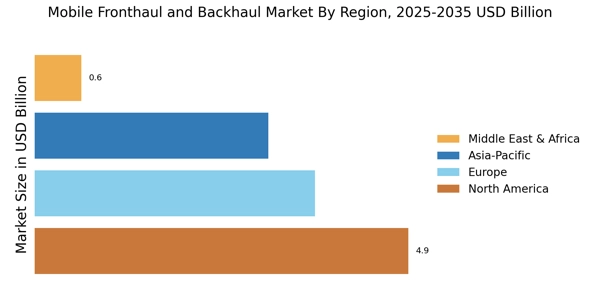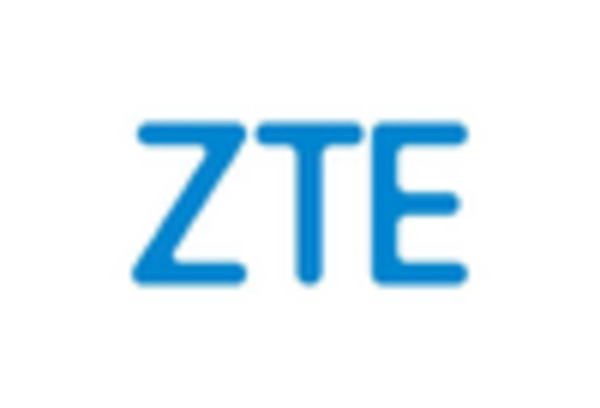Rising Focus on Network Security
As mobile networks evolve, the emphasis on network security is becoming increasingly critical within the Mobile Fronthaul and Backhaul Market. With the rise of cyber threats and data breaches, operators are compelled to implement robust security measures to protect their infrastructure and user data. This focus on security is driving investments in advanced encryption, intrusion detection systems, and secure data transmission protocols. Consequently, the Mobile Fronthaul and Backhaul Market is likely to see a surge in demand for solutions that not only enhance connectivity but also ensure the integrity and confidentiality of data. This trend underscores the importance of security in the ongoing development of mobile networks.
Government Initiatives and Funding
Government initiatives aimed at enhancing telecommunications infrastructure are significantly influencing the Mobile Fronthaul and Backhaul Market. Various governments are recognizing the importance of robust mobile networks for economic growth and social development. As a result, they are allocating funds and resources to support the deployment of advanced fronthaul and backhaul technologies. For instance, initiatives to expand broadband access in rural areas are prompting investments in mobile infrastructure. This trend not only stimulates market growth but also encourages private sector participation in the Mobile Fronthaul and Backhaul Market. The collaboration between public and private entities is likely to accelerate the deployment of next-generation networks.
Adoption of Virtualized Network Functions
The shift towards virtualized network functions is reshaping the Mobile Fronthaul and Backhaul Market. Network operators are increasingly adopting software-defined networking (SDN) and network functions virtualization (NFV) to enhance operational efficiency and reduce costs. This transition allows for more flexible and scalable network architectures, enabling operators to respond swiftly to changing demands. As a result, the Mobile Fronthaul and Backhaul Market is witnessing a growing trend towards the integration of virtualized solutions, which can optimize resource allocation and improve service delivery. The potential for reduced capital and operational expenditures further incentivizes operators to embrace these technologies.
Increased Demand for High-Speed Connectivity
The Mobile Fronthaul and Backhaul Market is experiencing a surge in demand for high-speed connectivity, driven by the proliferation of data-intensive applications. As consumers and businesses increasingly rely on streaming services, online gaming, and cloud computing, the need for robust mobile networks becomes paramount. According to recent estimates, mobile data traffic is projected to grow exponentially, potentially reaching 77 exabytes per month by 2025. This escalating demand compels network operators to invest in advanced fronthaul and backhaul solutions to enhance their infrastructure. Consequently, the Mobile Fronthaul and Backhaul Market is likely to witness significant growth as operators seek to meet the expectations of their users for seamless and high-speed connectivity.
Expansion of Internet of Things (IoT) Devices
The proliferation of Internet of Things (IoT) devices is a key driver for the Mobile Fronthaul and Backhaul Market. With billions of devices expected to be connected in the coming years, the demand for efficient data transmission and processing is intensifying. IoT applications, ranging from smart homes to industrial automation, require reliable and low-latency communication, which can only be achieved through advanced fronthaul and backhaul networks. The Mobile Fronthaul and Backhaul Market is poised to benefit from this trend, as network operators must upgrade their infrastructure to accommodate the increasing volume of data generated by IoT devices. This shift is anticipated to create substantial opportunities for growth within the market.


















Leave a Comment